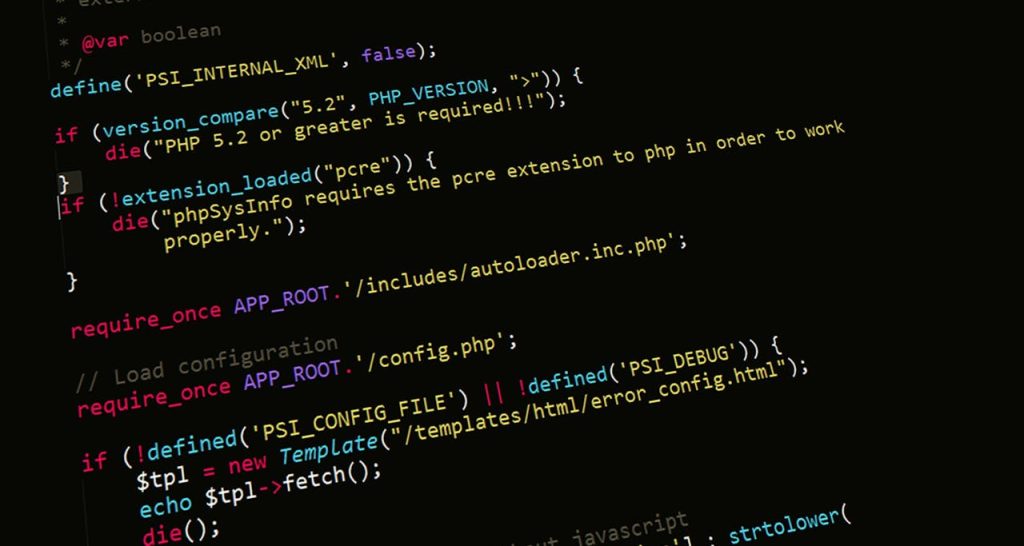
PHP Was Dead 10 Years Ago, Right?
Ten years ago, tech pundits predicted the demise of PHP in web development. They claimed that the rise of modern frameworks, like Ruby on Rails and Node.js, would render the programming language obsolete.
However, contrary to their speculations, PHP has not only survived but thrived over the past decade. Considering that 79% of websites use PHP today, the programming language seems to be doing quite well for a dying language. That’s because most sites rely on WordPress, Joomla, Drupal, or Magento, which use PHP to function.
To be fair, that number is declining, but not at an exponential rate as developers would expect. Most websites you see had the same functionality 10 years ago and will most likely remain the same for 20 or 30 years to come. So, even though there’s been a slight decline in PHP usage as a server-side scripting language, it would be foolish to write it off this early.
Background on PHP

Before we delve into why many developers lost their confidence in PHP, let’s look at the history of PHP and how it became so popular.
A Brief Overview of PHP
PHP was conceived three decades ago when Rasmus Lerdorf created the first incarnation of PHP, initially called PHP tools. Its name changed briefly from Forms Interpreter, finally settling on Personal Home Page Construction Kit, but more on that later.
The programming language had a simple set of CGI binaries written in C, built to help Rasmus track visits on his online resume. As Rasmus expanded on the language’s functionality, he encouraged the public to collaborate and improve it.
Rasmus never intended to create a programming language. However, because of its simplicity, PHP took off immediately after it launched in the 90s. It allowed developers to create fully functional websites in a few hours or days.
The Rise of PHP Programming Language
When PHP integrated Apache and MySQL in 95, it made building websites much easier. In 2005, developers integrated Zend Engine to offer features like object-oriented programming, PHP Data Objects (PDO), and other performance enhancement features.
Thanks to Zend Engine, PHP became a more reliable and secure language. Later in 2008, PHP 5 was updated with features like namespaces, lambdas, and an improved object model. By this time, some developers had switched to other trending programming languages like Java and Ruby on Rails.
The introduction of new frameworks such as Symfony and Laravel was a significant change that most developers wanted. It enabled them to create fast and well-structured solutions for web applications. The rise of platforms like WordPress and Joomla also made it easier to create dynamic websites with little coding knowledge.
Reasons behind PHP’s popularity at that time.
It’s no surprise that PHP was so popular in the early days. It was an open-source language, meaning developers could tinker around with it and alter its code to meet their own needs.
Second, creating a website was straightforward and required minimal coding knowledge – in fact, most self-taught developers often start with PHP before advancing to other languages.
PHP became popular in the web development realm for several key reasons:
- Ease of Use: PHP’s syntax was easy to understand. The language also offered a low learning curve compared to other languages, which also contributed to its widespread adoption.
- Open Source Community & Support: The open-source community was an invaluable asset for PHP developers. It allowed developers to collaborate on projects and come up with innovative solutions. There were also many tutorials and support documentation available online.
- Compatibility with Web Services & Databases: PHP was compatible with most web services and databases such as MySQL and PostgreSQL. This made it a great choice for developers wanting to create dynamic websites quickly without having to worry about compatibility issues.
- Integration with HTML: PHP could be embedded directly into HTML code, eliminating the need for separate CGI files. It was compatible with most servers and databases, offering a versatile solution for web development across different platforms.
- Community Support: PHP had a robust community of developers who continuously contributed to its development and improvement. The availability of numerous libraries and tools further facilitated its use.
- Frameworks: The advent of PHP frameworks like Joomla, Laravel, and WordPress simplified the development process, making it easier to build robust web applications.
- Performance: PHP required little server requirements compared to other languages. With the introduction of the Zend Engine, PHP’s performance significantly improved, making it a reliable choice for web development projects.
PHP Decline in Popularity

Despite its popularity, PHP’s decline was inevitable. The rise of alternative technologies led to a gradual decline in the popularity of PHP over the years. The language was criticized for its lack of scalability and security, making it unsuitable for complex web development projects.
The perception that PHP was outdated and not suitable for modern web development also contributed to its decreasing usage. As developers sought out newer technologies, PHP gradually lost its market share in the industry.
The Rise of Node.js
In the midst of the growing dissatisfaction with PHP, a new player – Node.js – entered the field. Launched in 2009, Node.js provided developers with the ability to write server-side applications in JavaScript.
It took advantage of the V8 JavaScript engine’s rapid execution speed, combined with its non-blocking I/O model, to create fast and scalable network applications.
Node.js also came with a rich package ecosystem through npm, a package manager, offering developers a wide array of modules and packages to use in their applications. This led to a surge in its popularity and adoption in the tech community.
The Emergence of React
React, developed and maintained by Facebook, was released in 2013 and quickly gained traction as a powerful JavaScript library for building user interfaces. React introduced the concept of a virtual DOM, drastically improving performance by minimizing direct manipulation of the HTML DOM.
This allowed developers to create large-scale applications that were both dynamic and fast. React also used a unidirectional data flow and component-based architecture, making code easier to understand and manage.
Its ability to create complex front-end applications, combined with its efficient performance, catapulted React to the forefront of JavaScript libraries.
The Advent of Angular
Angular, another significant player in the JavaScript ecosystem, was developed by Google and released in 2010. Angular introduced the concept of two-way data binding, reducing the amount of boilerplate code developers had to write.
It also promoted the use of TypeScript, a statically typed superset of JavaScript, which helped in catching errors during development and resulted in cleaner, more maintainable code.
Angular’s comprehensive approach to web development, including built-in solutions for routing, state management, and form handling, made it a go-to option for developers building complex applications.
The Rise of Other Technologies
The rise of modern frameworks made it easier for developers to create sophisticated web applications without relying on server-side scripting languages such as PHP.
The introduction of open-source platforms such as WordPress and Joomla also led to a decrease in the need for customized development. As a result, the demand for PHP developers has been declining steadily over the years.
PHP’s Revival

Fortunately, the PHP community did not give up on the language. They continued to improve and refine it to meet the demands of modern web development. In 2015, PHP 7 was released with upgraded features like reduced memory usage, improved security, and enhanced reliability.
This version included new language features such as scalar type declarations and return type declarations that enabled developers to write more performant code.
The introduction of modern PHP frameworks like Laravel and Symfony further revitalized the language. These frameworks provided developers with a set of tools and libraries for quickly building web applications without having to start from scratch.
Current State of PHP

Today, PHP’s usage is higher than ever before. According to the latest statistics, over 80% of websites are built using server-side scripting languages like JavaScript, Python, and PHP.
Moreover, the majority of that number is still made up of PHP; over 75% of websites are built using this language. This indicates its high level of popularity and usage despite the emergence of alternative technologies in recent years.
The continuing development and support for PHP by the community further suggest that it is here to stay for a long time. This is evident in the numerous libraries and packages available for PHP, as well as the newly released features with each version.
Conclusion
It’s clear that PHP has come a long way since its decline in popularity over 10 years ago. The language was able to survive by adapting to the needs of modern web development, thanks to the efforts of the community and the introduction of new frameworks.
Today, PHP is still a relevant language that’s used to build websites and applications across the web. It has seen a resurgence in its popularity due to increased performance, advanced features, and ease of development.
The past 10 years have been an interesting journey for PHP – from being on the brink of extinction to regaining its footing as one of the top programming languages for web development. With all the advancements being made, we can only look forward to what’s in store for the language in the future.
In short, PHP isn’t dead yet – far from it! It is continuing to grow and evolve with each new version. As a result, developers can be confident that they’ll continue to have a powerful programming language to use in their projects.
So, if you’re looking for a reliable language to build your next web application with, look no further than PHP! There’s certainly no better choice out there. It’s time to get coding!










